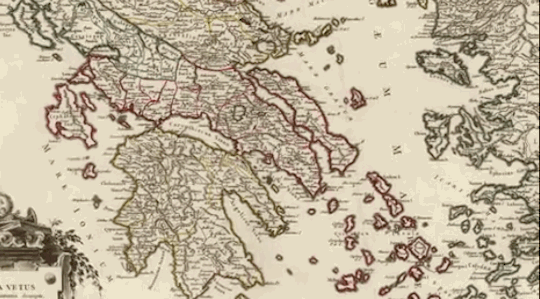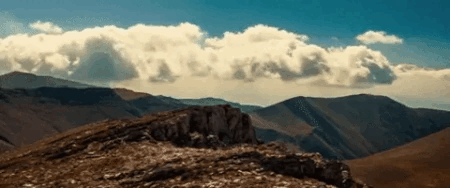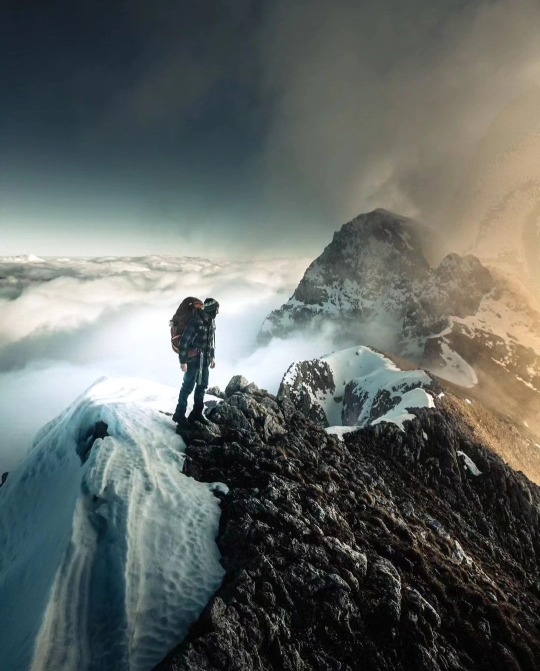#mount tymfi
Photo

Mount Tymfi, Greece by michaelev23 on Instagram.
452 notes
·
View notes
Text

Mount Tymfi, Greece 🇬🇷
13 notes
·
View notes
Text

I posted 14,531 times in 2022
483 posts created (3%)
14,048 posts reblogged (97%)
Blogs I reblogged the most:
@andthentheywilleatthestars
@in-mutual-weirdness
@thoughtlessarse
@hctibykoops
I tagged 1,398 of my posts in 2022
#climate change - 64 posts
#profanity - 37 posts
#environment - 28 posts
#fossil fuels - 17 posts
#dead animals - 17 posts
#animal death - 14 posts
#trypophobia - 14 posts
#uk politics - 12 posts
#biodiversity - 12 posts
#science - 11 posts
Longest Tag: 139 characters
#i've heard (well read) this many times but this is the first time i'm wondering about what exact language was used and the language barrier
My Top Posts in 2022:
#5


943 notes - Posted October 12, 2022
#4
For the past couple of years, I’ve been working with researchers in northern Greece who are farming metal. In a remote, beautiful field, high in the Pindus mountains in Epirus, they are experimenting with a trio of shrubs known to scientists as “hyperaccumulators”: plants which have evolved the capacity to thrive in naturally metal-rich soils that are toxic to most other kinds of life. They do this by drawing the metal out of the ground and storing it in their leaves and stems, where it can be harvested like any other crop. As well as providing a source for rare metals – in this case nickel, although hyperaccumulators have been found for zinc, aluminium, cadmium and many other metals, including gold – these plants actively benefit the earth by remediating the soil, making it suitable for growing other crops, and by sequestering carbon in their roots. One day, they might supplant more destructive and polluting forms of mining.
The three plants being tested in Greece – part of a network of research plots across Europe – are endemic to the region. Alyssum murale, which grows in low bushes topped by bunches of yellow flowers, is native to Albania and northern Greece; Leptoplax emarginata – taller and spindlier, with clusters of green leaves and white petals – is found only in Greece; and Bornmuellera tymphaea, the most efficient of the three, which straggles across the ground in a dense layer of white blossom, is found only on the slopes of the Pindus (its name comes from Mount Tymfi, one of the highest peaks of the range).
What I have come to understand about these plants is that, by virtue of their evolutionary history and their close association with the soil, climate and wider ecosystem in which they have emerged, they embody a certain kind of knowledge: an understanding and accommodation with the places they have found themselves in. Humans have sought out deposits of rare metals for thousands of years, and developed ever-more violent ways of accessing them, but these plants have been around far longer, and have found more equitable and regenerative ways of doing much the same thing. Perhaps we have something to learn from them.
Hyperaccumulators are far from being the only non-humans that we might learn from, as scientific research in recent decades has shown us. Take slime moulds: strange, unicellular creatures somewhere between fungi and amoebae, which turn out to be very good at solving some very hard mathematical problems. Researchers at Lanzhou University in China have shown that Physarum polycephalum, a particularly lively slime mould, can solve the “travelling salesman” problem – a test for finding the shortest route between multiple cities – faster and more efficiently than any supercomputer humans have devised.
Cows, sheep, dogs and other animals have been shown to predict earthquakes in advance of tremors which register on seismographs. Squids and octopuses, we have learned, spread their neurons out through their bodies in ways that allow their limbs, and perhaps other faculties, to act independently of a centrally controlling mind. Spiders store information in their webs, using them as a kind of extended cognition: a mind outside the body entirely. A new conception of intelligence is emerging from scientific research: rather than human intelligence being unique or the peak of some graduated curve, there appear to be many different kinds of intelligence with their own strengths, competencies and suitabilities.
We’re also discovering all kinds of abilities which suggest whole worlds of being and awareness among non-humans we were previously unaware of. Plants, it turns out, hear and remember. In one experiment, they demonstrated the ability to respond with chemical defences to the particular sound of caterpillars munching on their leaves, even when it came from a tape recorder. In another, mimosa plants – which curl their leaves up when disturbed – learned to ignore being dropped a short distance when it proved harmless, and to react in the same way when tested days or weeks later, having in some way internalised this experience. Meanwhile, beneath the forest floor, we have become privy to the commerce and conversations of trees as they trade nutrients and information between families and species through the networks of fungi which connect their roots, in ways we are only just beginning to understand. These, too, are kinds of intelligence: and among other things, they are the way other species have learned to survive life-threatening events.
In the struggle to mitigate and adapt to climate breakdown – and all the other entangled crises we face – we are starting to recognise that other ways of knowing and acting on the world, from indigenous knowledge systems to changes in our own consumption and patterns of life, are vital to surviving and thriving on a hotter, wetter and more conflicted planet. We know too that this survival is dependent not only on our own abilities and inventions, but on the survival of the other species we share the planet with. The collapse of biodiversity which is already occurring makes it harder for us to hold back the collapse of whole ecosystems on which we too depend: for the pollination of crops, for disease resistance, for safe and sufficient food, for protection from fires and other natural disasters. We will flourish together, or not at all.
The deep knowledge that is possessed by animals, plants and others – their intelligence, we should begin to say – is another reason why we must preserve and protect them. But more than this: we should be listening to them, learning from them and working with them. The hyperaccumulator plants, for example, show us there are other ways of getting what we need from the planet; they also remind us that there are limits to what we should extract, as to turn them into another agroindustrial resource like soya beans or palm oil would be just as damaging. The knowledge that there are other ways of being intelligent on this planet should force us to reassess the centrality and usefulness of our own. Other worlds are not only possible, they have been growing around us all along.
1,013 notes - Posted April 26, 2022
#3
The Hanford nuclear site was established in 1943 as part of the Manhattan Project, and over the next four decades produced nearly two-thirds of the plutonium for the US’s nuclear weapons supply, including the bomb dropped on Nagasaki.
During its lifespan, hundreds of billions of gallons of liquid waste were dumped in underground storage tanks or simply straight into the ground. After the site’s nine nuclear reactors were shut down by 1987, about 56m gallons of radioactive waste were left behind in 177 large underground tanks – two of which are currently leaking – alongside a deeply scarred landscape.
In the decades since, the Yakama Nation has been one of four local Indigenous communities dedicated to the cleanup of this historic landscape. For the Yakama Nation, that has meant tireless environmental and cultural oversight, advocacy and outreach with the hope that one day the site will be restored to its natural state, opening the doors to a long-awaited, unencumbered homecoming.
Today, their outreach work has reached a fever pitch. There are few Yakama Nation elders still alive who remember the area before its transformation, and there are likely decades to go before cleanup is complete. So members are racing to pass on the site’s history to the next generation, in the hopes they can one day take over.
Yakama Nation history on the Hanford site dates back to pre-colonization, when people would spend the winter here fishing for sturgeon, salmon and lamprey in the Columbia River, as well as gathering and trading with other families. In 1855, the Nation ceded over 11m acres of land to the US, which included the Hanford area, and signed a treaty that relegated them to a reservation while allowing the right to continue fishing, hunting, and gathering roots and berries at “all usual and accustomed places”.
But in the 1940’s, the situation shifted dramatically when the area was cleared out to make room for the construction of nuclear reactors.
LaRena Sohappy, 83, vice-chairwoman for Yakama Nation General Council, whose father was a well-known medicine man, grew up in Wapato, about 40 miles from Hanford. She said she remembers the strawberry fields that lined the Hanford site, her family gathering Skolkol, a root and daily food, and traveling to the area for ceremonies.
Her cousin’s family who lived close to Hanford were woken in the middle of the night and forced to leave to make way for the nuclear site, she recalled
“They didn’t have time to pack up anything,” said Sohappy. “They just had to leave and they were never told why and how long they were going to be gone.”
The effort to give Indigenous people a voice in Hanford’s fate was forged in part by Russell Jim, a member of Yakama Nation’s council, whose work has been credited with helping to keep Hanford from becoming a permanent “deep geologic repository”, a place where high-level nuclear waste from this site and others across the country would be stored.
“From time immemorial we have known a special relationship with Mother Earth,” Jim, who died in 2018, said in a statement to the US Senate in 1980. “We have a religious and moral duty to help protect Mother Earth from acts which may be a detriment to generations of all mankind.”
Today, the ER/WM program, which was founded in the early 1980’s with Jim at the helm, includes such staff as a biologist, ecologist and archeologist. It’s funded by the US Department of Energy (DoE), which operates the Hanford site and leads the cleanup process under an agreement with the US Environmental Protection Agency (EPA) and the Washington state department of ecology.
The Yakama Nation program’s focus is on accelerating a thorough cleanup of the site, protecting culturally significant resources and assessing the threats to wildlife and water.
1,087 notes - Posted October 3, 2022
#2

This upstanding gentleman?? This pillar of the community??
4,263 notes - Posted July 10, 2022
My #1 post of 2022


See the full post
7,379 notes - Posted March 28, 2022
Get your Tumblr 2022 Year in Review →
#tumblr2022#year in review#my 2022 tumblr year in review#your tumblr year in review#arguably cheerier than last year#though you wouldn't know it based on tags
5 notes
·
View notes
Text

The Dragon Lake of Mount Tymfi, Greece by antonios_papagiannopoulos on Instagram.
0 notes
Text
Ode on a Grecian vacation
To all my wonderful followers,
I shall be away on a vacation to Greece from today for about two weeks. I will have zero internet access as the plan is to go off grid.

I have to use up my remaining vacation days left to me at work or lose it. It’s been a tough year of long punishing hours on the corporate treadmill - and that’s not even counting the toll of Covid that has affected all of us in varying degrees of discomfort and despair. And so it’s a perfect opportunity to re-charge my batteries.
I’m going out to Greece with a couple of ex-army friends who, besides being extremely experienced and skilled mountaineers and hikers, are also good natured and fun loving company to be around.

We’re going to be climbing Mount Olympus which is the highest peak in Greece.
In Greek mythology, of course, it was the home of the Greek gods and the peak of Stefani was considered ‘Zeus’s Throne.’ Located in the Olympus Range between Thessaly and Macedonia, Mt. Olympus features 46 peaks exceeding 2,000 metres. The apex lies at Mytikas (2,917m), while ‘Zeus’s Throne,’ or Stefani (2,909m), is a notable summit for its role as the Greek God’s personal - you guessed it - throne. The second-highest peak, Skolio (2,911m), is a great place for rock climbing along its north face. We’ll be attempting over a few days to climb both peaks in under three days or less. It is estimated that roughly 5,000 climbers ascend Mt. Olympus each year, though the elusive top rock of Mytikas is never attained by all of them. Depending on which trail you choose it can be a moderately do-able climb to a tough hike. It’s classified as a Grade III climb near the summit and some routes require really experienced technical rock climbing skills.
Where would the fun be if we didn’t decide to undertake the toughest routes to the top, at well over 8 hours of climbing a day?

We’re also going on to do some serious trekking on hardcore trails.
One of which is over 75km. The Menalon Trail is a long-distance hiking route which runs from between Stemnitsa and Lagkadia, two mountain villages in Arcadia, on the Peloponnese peninsula, in the very south of Greece. It’s a route which is a lot more off the beaten track than a lot of hiking in Greece, and the 75km route is not only mountainous but also full of valleys, canyons, huge natural plateaus and bare peaks. It’s really a thing of beauty.
Other trails around Greece worth mentioning that we’re doing includes one to the Neda Waterfalls which is very much a untamed river trek off the beaten track. Neda is a river that passes through the Peloponnese region, in an area extremely well-known for its beautiful waterfalls. We’re also including a trek through the Vikos Gorge. It’s an insane gorge. The Guinness Book of World Records lists this gorge as the deepest in the world relative to its width. It lies on the slopes of Mount Tymfi and is half a kilometre at its deepest point. The hike is around 12km long, and the area is well known for stone bridges and old monasteries. Some of the pathways are narrow ledges on the sides of the gorge and so it’s considered dangerous in parts but that’s part of the adrenaline rush that we’re all fixated on.
I am going to spoil myself at the end by relaxing and seeing old friends in Athens. I have some Classicist friends who are doing fantastic research and excavation work in institutions based there.

All of which means I won’t be posting for the next two weeks on my blog. If you’ve sent me questions or mail to my inbox, please do forgive me if I don’t reply during this time. I will of course endeavour to reply as soon as I am able to.
I mean this sincerely when I say I am deeply appreciative of all of you who follow my blog. I wish I was more worthy of your support.
Meanwhile we would all do well to heed the words from my well worn copy of Herodotus that I’m taking with me:
Ει εθέλοι κατεσπουδάσθαι αιεί μηδέ ες παιγνίην το μέρος εωυτόν ανιέναι, λάθοι αν ήτοι μανείς ή ό γε απόπληκτος γενόμενος.
(If a man insisted always on being serious, and never allowed himself a bit of fun and relaxation, he would go mad or become unstable without knowing it.)
Stay frosty.
Black Swan Europa
117 notes
·
View notes
Photo

#tymfis#mount tymfis#stone built#stone#built#mikro papigo#zagorohoria#zagorochoria#greece#greek#mountain#cafe#bar#restaurant#travel#traveler#travelling#travelers#lights#village#village lights
3 notes
·
View notes
Photo

All things are wild and free... Drakolimni of Mount Tymfi! A beautiful miracle of nature, free for all of us to explore..! ~ @panos_xaxiris made this wonder possible 📸 ~ ~ Tag #thisisepirusgr or @thisisepirus for a chance to be featured! 🔝 ~ ~ #thisisepirus #photooftheday #epirus_shots #travelling #wu_greece #travelphotography #travel #visitgreece #instatravel #travelgram #travelblogger #photographer #discoverearth #discover_europe_ #visitgreece #discovergreece #greece #greecestagram #greece_travel #greecetravelgr1_ #ig_greece #epirus #alluring_greece #eros_greece #igers_greece #igdaily #igtravel #earth_shotz #travellingthroughtheworld #placestogo (στην τοποθεσία Δρακολιμνη Τυμφης) https://www.instagram.com/p/CAs1bE4n2u9/?igshid=1tqif2xgjjnh8
#thisisepirusgr#thisisepirus#photooftheday#epirus_shots#travelling#wu_greece#travelphotography#travel#visitgreece#instatravel#travelgram#travelblogger#photographer#discoverearth#discover_europe_#discovergreece#greece#greecestagram#greece_travel#greecetravelgr1_#ig_greece#epirus#alluring_greece#eros_greece#igers_greece#igdaily#igtravel#earth_shotz#travellingthroughtheworld#placestogo
0 notes
Photo

Tsuka Rossa, the peak of Mount Tymfi, Greece by grego_rios on Instagram.
#greece#europe#travel#mountains#peaks#mountaineering#climbing#clouds#skyscape#snow#tsuka rossa#mount tymfi#tymfi#ioannina#epirus#mainland
149 notes
·
View notes
Photo

The Dragon Lake of Mount Tymfi, Greece by antonios_papagiannopoulos on Instagram.
#greece#europe#travel#landscape#mountains#snow#lake#dragon lake#tymfi#mount tymfi#tymphi#ioannina#epirus#mainland#large
737 notes
·
View notes
Photo

📌 Location:Tymfi, Greece. Photo: Joakeim Ampatzoglou.
#greece#travel#travelling#mountains#landscape#nature#clouds#lake#skyscape#tymfi#ioannina#epirus#mount tymfi#tymphi#mainland#large
99 notes
·
View notes
Photo

Hector on Mount Tymfi || hector_the_malamute on Instagram
#greece#europe#travel#wanderlust#dog#mountains#hiking#landscape#animals#tymfi#mount tymfi#tymphi#ioannina#epirus#mainland
143 notes
·
View notes
Photo

Fun fact: Mount Tymphi was studied in detail by Greek geographer Strabo (64 BC - 24 AD).
Photo by Kafetsis A. Fotis.
#greece#europe#travel#wanderlust#winter#snow#mountains#nature#tymphi#mount tymphi#tymfi#ioannina#epirus#mainland#greek facts
47 notes
·
View notes
Text

Shelter of Astraka, Mount Tymfi by George Bozouris.
#greece#europe#travel#mountains#landscape#lake#mountaineering#climbing#astraka#tymfi#ioannina#epirus#mainland
121 notes
·
View notes
Photo

Gamila (2,497 m - 8,192 ft), Mount Tymfi, Konitsa, Greece. Photographed by Spyros Zigras for enikos.gr.
63 notes
·
View notes
Photo

The Dragon Lake and meadows of Tymfi mountain, Greece by @i_am_souho via Instagram.
#greece#europe#travel#wanderlust#mountains#nature#lake#tymfi#epirus#ioannina#mainland#mount tymfi#large
77 notes
·
View notes
Photo

The peak of Astraka (2432 m - 7979 ft)) and the Dragon Lake as seen from Gamila, the summit of Tymfi mountain (2497 m - 8192 ft) . In the distance one can also see the peak of Lapatos (2254 m - 7395 ft) and even farther back Mount Nemertsika (2455 m - 8054 ft) . Photo by Konstantinos Farsarotas.
43 notes
·
View notes